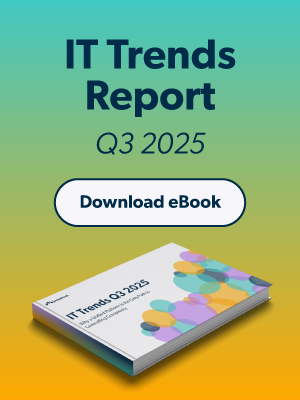Updated on September 10, 2025
PowerShell Script Block Logging represents a fundamental shift in how security teams monitor and defend against malicious PowerShell activity. Unlike traditional command logging that captures only surface-level information, this Windows security feature records the actual content of PowerShell commands and scripts as they execute. The capability proves essential for modern threat detection, providing security analysts with granular visibility into both legitimate administrative tasks and sophisticated attack techniques.
The logging mechanism operates at the PowerShell engine level, capturing code execution regardless of how attackers attempt to hide their activities. This deep integration makes Script Block Logging particularly valuable for detecting advanced persistent threats and living-off-the-land attacks that leverage PowerShell’s legitimate functionality for malicious purposes.
For IT professionals and security teams, understanding Script Block Logging’s technical implementation and practical applications can significantly enhance incident response capabilities and overall security posture. The feature addresses a critical gap in Windows logging by providing comprehensive visibility into one of the most commonly abused administrative tools in enterprise environments.
Definition and Core Concepts
PowerShell Script Block Logging captures the complete content of PowerShell script blocks as they are processed by the PowerShell engine. This logging occurs at the runtime level, providing detailed records of executed code that go far beyond traditional command-line logging approaches.
- Script Block: A script block represents any unit of executable PowerShell code. This includes single commands entered at the command line, complex multi-line scripts, and code blocks within larger PowerShell modules. The PowerShell engine treats each of these units as a discrete script block for logging purposes.
- De-obfuscation: The most critical technical advantage of Script Block Logging lies in its de-obfuscation capability. The feature logs code after the PowerShell engine has processed and decoded it, not as it was originally submitted. When attackers use base64 encoding, string manipulation, or other obfuscation techniques to hide malicious commands, the logged event contains the clear, readable version of the actual code that executed.
This de-obfuscation process occurs automatically within the PowerShell runtime. The engine first processes any encoding or obfuscation layers, then logs the resulting clear-text code. This mechanism ensures that even heavily obfuscated attack scripts generate readable log entries that security analysts can immediately understand and act upon.
How It Works
Script Block Logging activation requires configuration through Group Policy or direct Windows Registry modification. Once enabled, the PowerShell engine automatically generates log entries for every script block it processes, regardless of the execution method or source.
- Event ID 4104: All PowerShell script block events are recorded with Event ID 4104 in the “Microsoft-Windows-PowerShell/Operational” Windows Event Log. Each log entry includes the complete script text, execution timestamp, user context, process information, and additional metadata that provides comprehensive context for security analysis.
- Logging Mechanism: The PowerShell engine captures script blocks at the execution point and sends the de-obfuscated content directly to the Windows Event Log subsystem. This logging mechanism captures code executed through multiple vectors—direct command-line entry, .ps1 script files, PowerShell modules, and even scripts executed entirely from memory without touching the file system.
The logging process operates transparently to users and applications. PowerShell continues normal execution while simultaneously generating detailed audit trails. The engine handles all formatting and transmission to the Event Log, ensuring consistent log structure and reliable delivery even under high-volume execution scenarios.
Use Cases and Applications
PowerShell Script Block Logging serves as a cornerstone technology for modern security operations, enabling multiple critical security functions across enterprise environments.
- Threat Detection: Security analysts leverage these logs to identify malicious PowerShell activity in real-time. Common detection scenarios include credential dumping attempts, code injection techniques, fileless malware execution, and lateral movement activities. An unusual spike in Event ID 4104 entries from specific machines often indicates active compromise or reconnaissance activities.
- Incident Response: During security incidents, Script Block Logging provides crucial forensic evidence for understanding attacker behavior. Response teams can trace complete attack sequences, identify specific techniques and tools used, and determine the full scope of system compromise. The logs often reveal attack progression that other security tools miss, particularly for memory-based attacks that leave minimal file system artifacts.
- Threat Hunting: Proactive security teams use these logs for advanced threat hunting operations. Hunters can search for specific command patterns, suspicious argument combinations, or known attack tool signatures across large environments. The de-obfuscated content makes it possible to identify attack patterns even when adversaries attempt to hide their activities through encoding or other evasion techniques.
The logs also support compliance reporting and security metrics generation, providing quantifiable data about PowerShell usage patterns and security posture improvements over time.
Advantages and Trade-offs
Advantages:
- High Fidelity: Script Block Logging captures actual executable code, providing unambiguous evidence of what occurred on target systems. This fidelity eliminates guesswork during incident analysis and provides concrete evidence for legal or compliance proceedings.
- Evasion Resilience: The automatic de-obfuscation capability effectively neutralizes common attacker evasion techniques. Even sophisticated obfuscation methods that defeat other security tools produce clear, readable log entries that reveal malicious intent.
- Runtime Integration: Because logging occurs at the PowerShell engine level, it captures all execution methods including memory-only attacks, encoded commands, and dynamically generated scripts that might evade file-based monitoring solutions.
Trade-offs:
- Log Volume: Script Block Logging generates substantial log volumes in environments with heavy PowerShell usage. Administrative scripts, automation frameworks, and legitimate system management activities all contribute to log generation that can overwhelm traditional log management systems.
- Performance Impact: The logging process introduces minimal but measurable overhead to PowerShell execution. In high-frequency scenarios or resource-constrained environments, this overhead may impact system performance or application response times.
- Storage Requirements: The detailed nature of script block logs requires significant storage capacity and robust log management infrastructure. Organizations must plan for long-term retention and efficient search capabilities to realize the security benefits.
Troubleshooting and Considerations
- Configuration: Enable Script Block Logging through Group Policy by navigating to Computer Configuration -> Administrative Templates -> Windows Components -> Windows PowerShell -> Turn on PowerShell Script Block Logging. Set the policy to “Enabled” and optionally configure verbose logging for additional detail capture.
- Log Management: Raw Event Log storage limits make local retention impractical for most environments. Organizations should implement Security Information and Event Management (SIEM) systems or centralized log management platforms to collect, analyze, and retain Script Block Logging data effectively.
- Performance Optimization: In high-volume environments, consider selective logging approaches or log forwarding configurations that balance security visibility with system performance. Some organizations implement logging only on critical systems or during specific time periods to manage resource consumption.
- Bypass Considerations: While Script Block Logging provides robust security visibility, sophisticated attackers have developed bypass techniques including PowerShell version downgrade attacks, direct .NET framework calls, and alternative execution environments. These bypass methods often require elevated privileges or specialized knowledge, and they frequently leave their own forensic artifacts that security teams can detect through complementary monitoring approaches.
Regular testing and validation of logging configurations ensures continued effectiveness and helps identify any gaps in coverage that might affect security monitoring capabilities.
Key Terms
- PowerShell Script Block Logging: Windows security feature that records complete PowerShell code execution with automatic de-obfuscation capabilities.
- PowerShell: Microsoft’s command-line shell and scripting language built on the .NET framework, commonly used for system administration and automation tasks.
- Obfuscation: Techniques used to make code difficult to read or analyze, often employed by attackers to hide malicious functionality from security tools.
- Event ID 4104: The specific Windows Event Log identifier assigned to PowerShell script block logging entries.
- Security Information and Event Management (SIEM): Centralized platforms that collect, correlate, and analyze security logs from multiple sources to enable threat detection and incident response.






